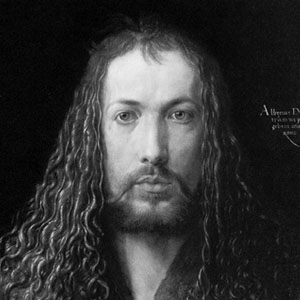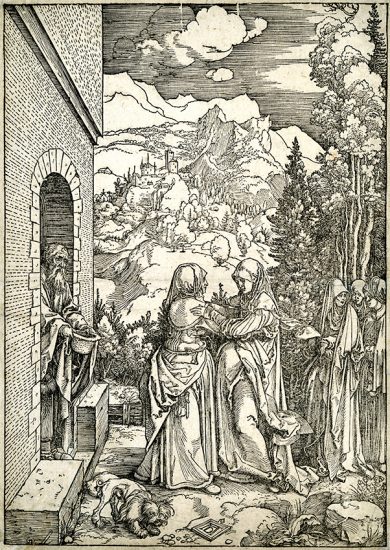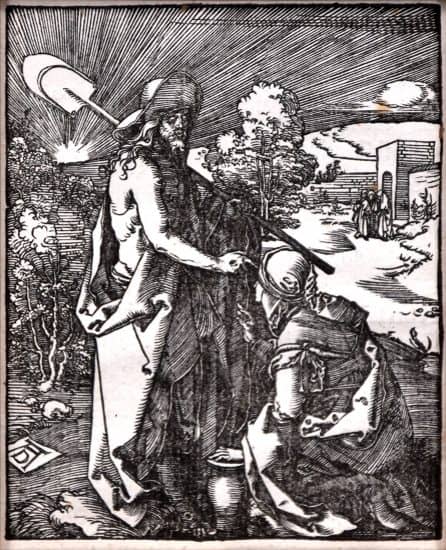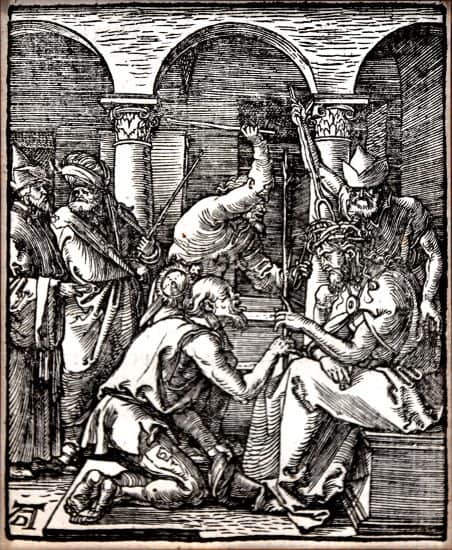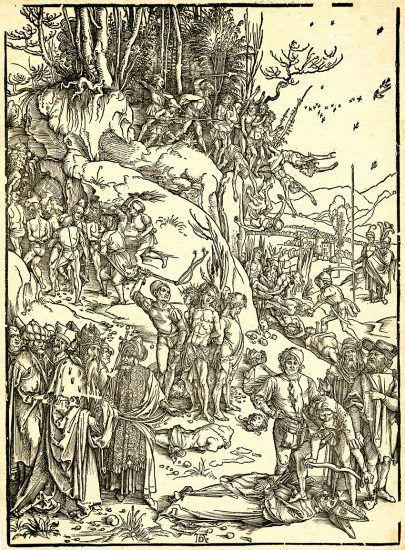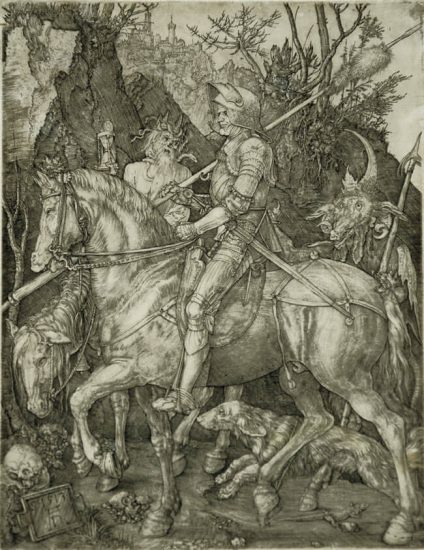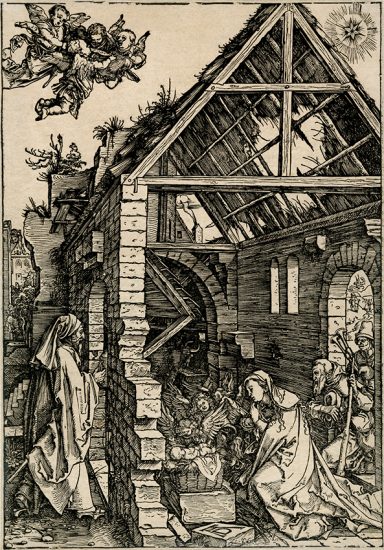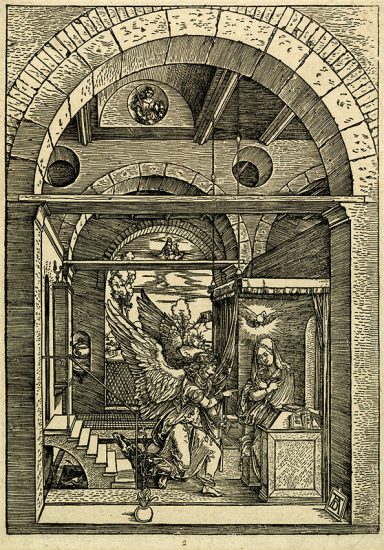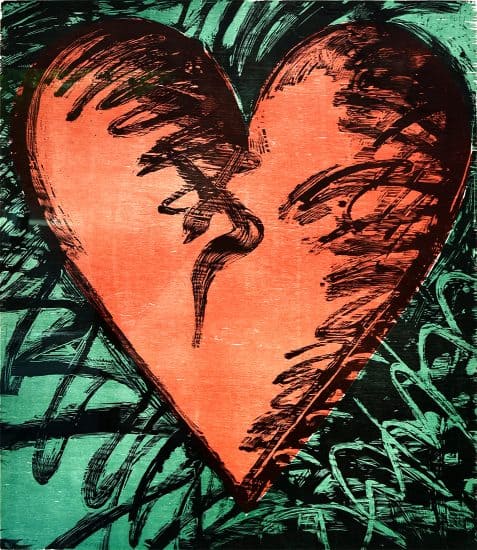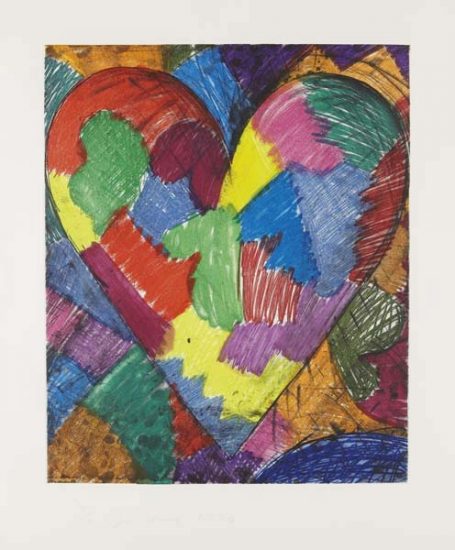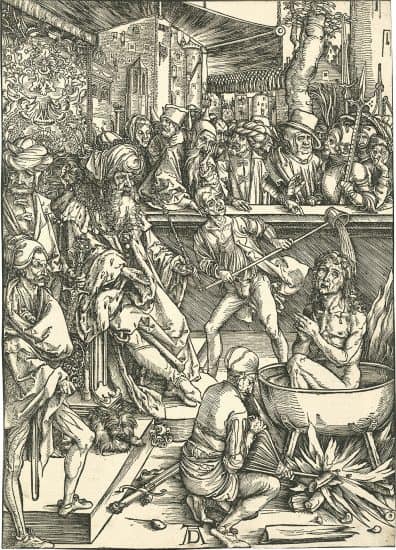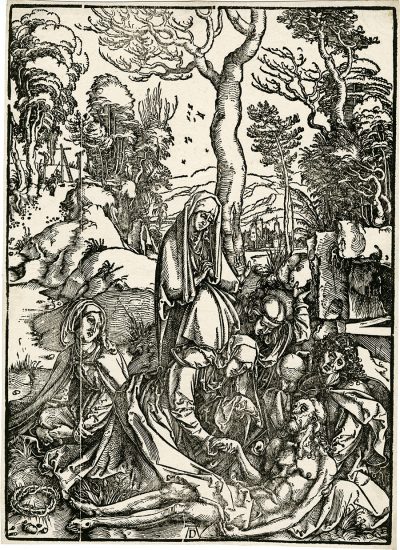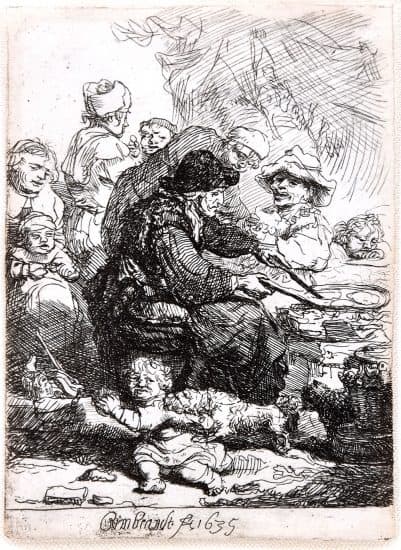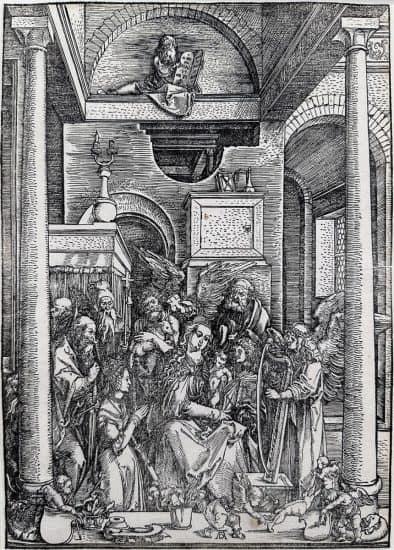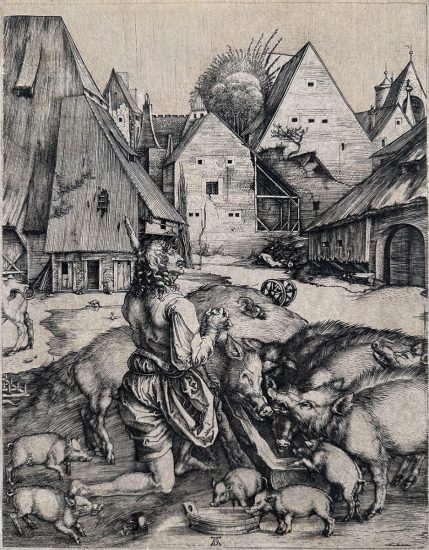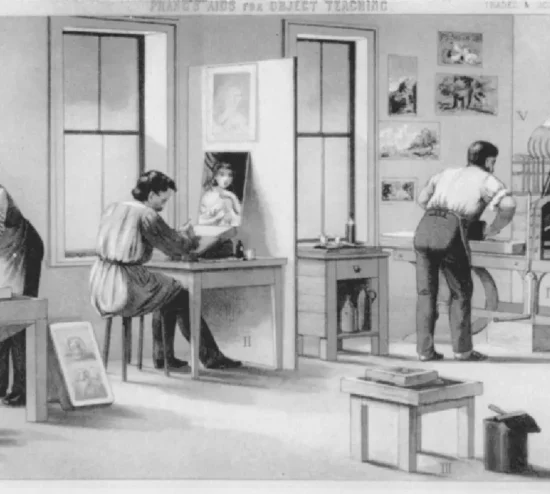Albrecht Dürer was a German artist and printmaker who is widely regarded as one of the greatest figures in the history of art. One of Dürer's most significant contributions to the field of printmaking was his work with woodcut printing, a technique in which a design is carved into a block of wood and then printed onto paper or other materials.
Dürer was particularly skilled at woodcut printing, and his works in this medium are notable for their intricate details, rich textures, and bold contrasts. He used a variety of techniques to achieve these effects, including the use of multiple blocks for different colors and textures, and the use of hatching and cross-hatching to create depth and dimensionality.
One of Dürer's most famous woodcut prints is "The Apocalypse," a series of 15 prints that depict scenes from the biblical book of Revelation.
The series is notable for its vivid imagery and its innovative use of the woodcut medium, which Dürer used to create a sense of drama and intensity that was unprecedented at the time.
In addition to his work with woodcut printing, Dürer also experimented with other forms of printmaking, including engraving and etching. His contributions to the field of printmaking helped to elevate it to the status of a major art form, and his innovations continue to inspire artists and printmakers to this day.
Overall, Albrecht Dürer's work with woodcut printing was an important part of his legacy as an artist and printmaker, and his contributions to the field continue to be celebrated for their technical skill, innovation, and aesthetic beauty.
One of the oldest forms of printmaking, the woodcut, is still being applied today by artists who both embrace the tradition and seek to bring the ancient medium into the future. In this article, we will discuss the definition and developments within the medium. The woodcut is a technique of relief printing in which the artist cuts away from the surface of a polished block of wood. The areas that are not cut, the relief, will then be inked with either oil-based or water-based ink so that an impression can be transferred to wood or fabric when pressure is applied, either by hand with a barren or wooden spoon, or in a printing press.
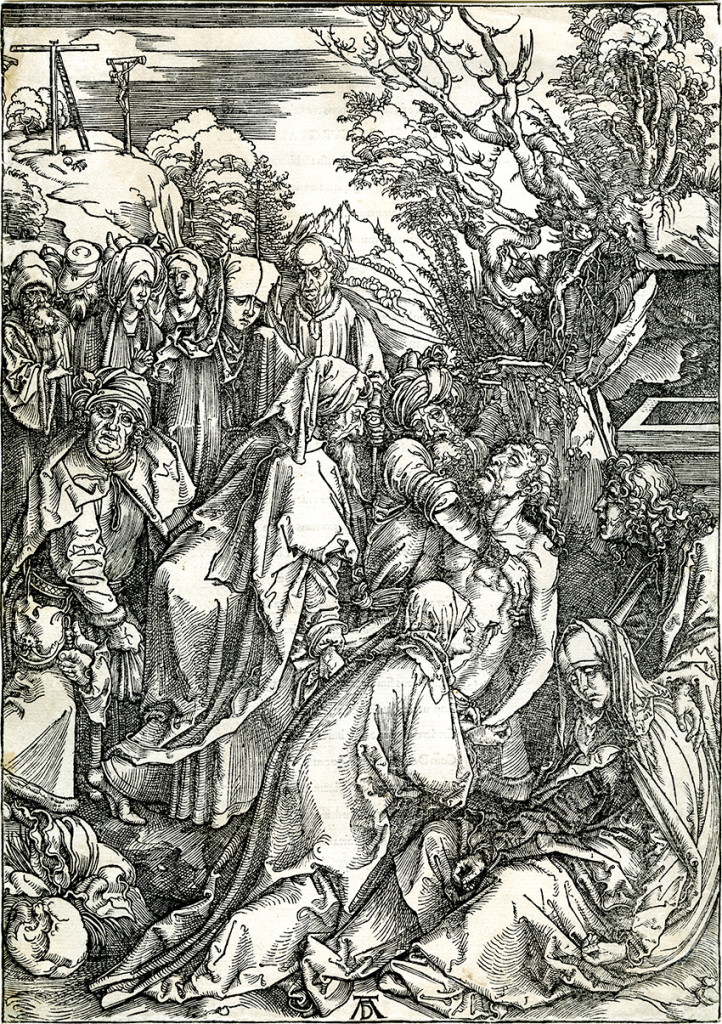
Woodcut print, woodblock print, and wood engraving print are terms that are often used interchangeably, but there can be some distinctions. The distinction between woodcut print and woodblock print is vague, and some people define the terms the same way.
Sometimes, we see “woodblock” used to describe East Asian relief prints printed from wood, and “woodcut” for the West’s relief prints printed from wood,
Sometimes, we see “woodblock” used to describe East Asian relief prints printed from wood, and “woodcut” for the West’s relief prints printed from wood, however this is a preference that is not universally followed.
Woodcut print

Developed in Europe to illustrate books and manuscripts, European woodcut prints are most often printed with an oil-based ink applied in an even, thin layer with a roller. When defined this way, European woodcuts usually refer to images and usually contain very little text.
Woodblock print
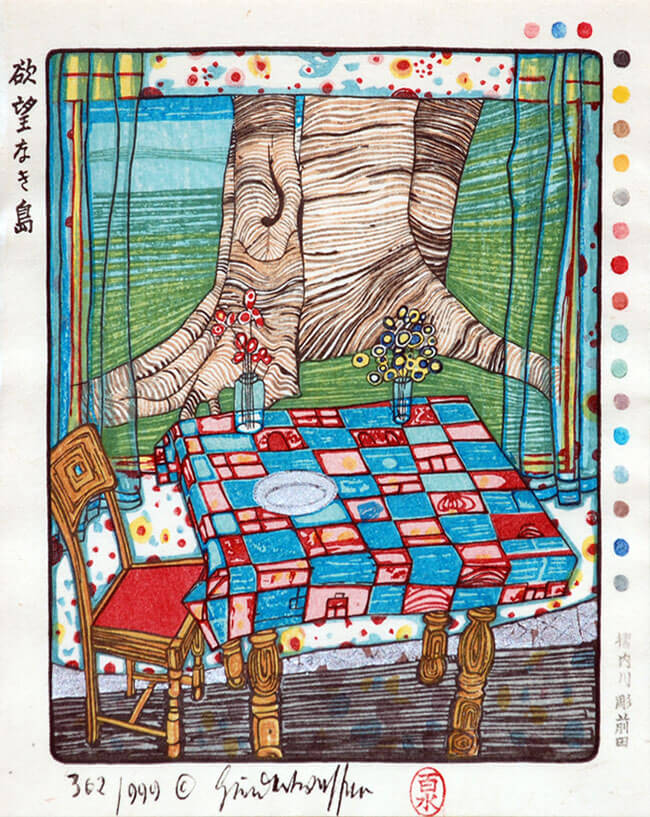
When interpreted as an East Asian application, woodblock prints can feature text, patterns, or images. The design would first be drawn on paper that would be transferred to another partially transparent paper. This thin, transparent paper would be pasted to the polished wooden block. The carver would cut around the design, and ink would be applied to the raised relief surface. A sheet of paper is laid across the inked wood block. Using a flat, round wooden pad called a baren, pressure is applied to the reverse of the sheet so that the ink transfer from the wood to the paper. In both Chinese and Japanese woodblock printing, water-based ink is used. However, the water-based ink and rice starch paste are mixed in and applied on the block in an even film. Damp paper is used so that the ink is deeply pressed into the paper. Chinese woodblock prints use water-based ink printed on dry paper.
Wood Engraving
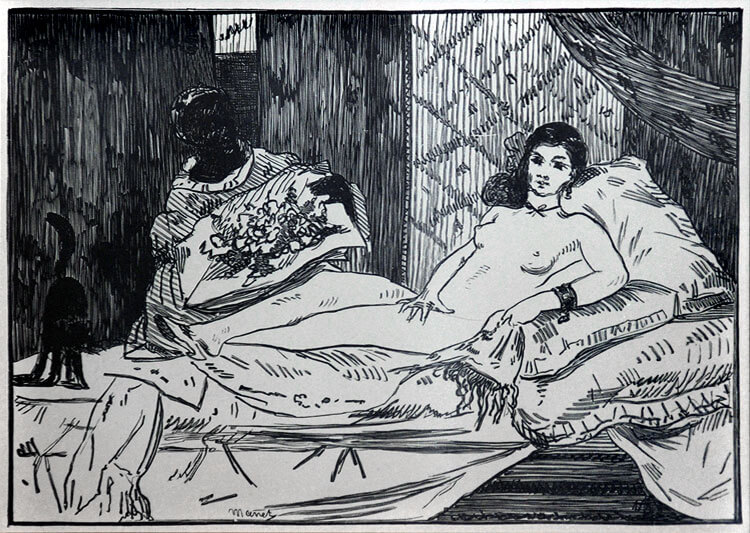
No matter what term is used, woodcut or woodblock prints are traditionally cut along the grain. Wood engraving is a technique developed in the 18th century in which the design is cut into the end grain of the wood block, instead of along the grain, on a harder wood than the typical woodcut. Wood engravings tend to have more detail and are often smaller. This is because the block that is cut in order to make a wood engraving could not be longer than the diameter of the tree trunk or limb, unless another block is assembled. A larger block size can be made by joining a number of smaller blocks together; these blocks must be the same thickness and density to achieve the desired appearance. By cutting into the engrain, the carver could use a burin instead of a knife. The burin is a very thick tool that allowed the engraver to create detailed, delicate lines, such as cross-hatching.
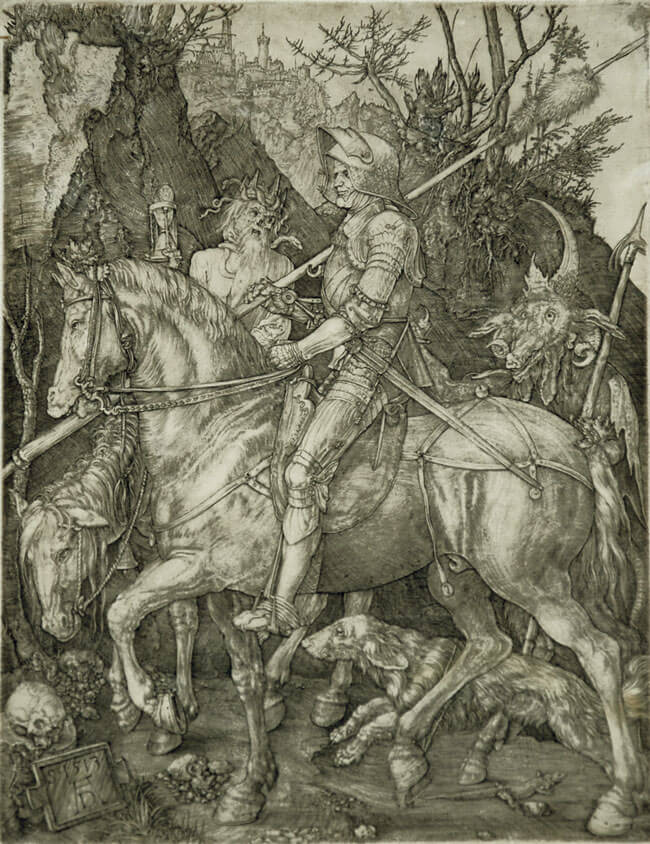
Browse our collection of fine art Albrecht Dürer woodcuts.

